Welcome to the ultimate guide to Persian Cats, one of the most beloved and iconic cat breeds in the world. As a professional copywriting journalist, I have spent countless hours researching and gathering valuable information about this fascinating feline. In this guide, you will discover everything you need to know about Persian Cats, from their unique characteristics and temperament to their grooming needs and health considerations.
The Persian Cat is a breed that has captured the hearts of cat lovers around the world. Known for their plush, luxurious coat and regal bearing, these felines are a popular choice for pet owners seeking a truly special companion.
But there’s much more to this breed than just their good looks. Persian Cats have a distinctive personality and temperament, making them a fascinating study for anyone interested in feline behavior and psychology. In this guide, we will explore all aspects of the Persian Cat, so you can gain a comprehensive understanding of this remarkable breed.
Key Takeaways:
- Persian Cats are one of the most popular cat breeds in the world.
- They are known for their striking appearance, including their long, plush coat and regal bearing.
- Persian Cats have a distinctive personality and temperament, which sets them apart from other breeds.
- Understanding the breed’s grooming needs and health considerations is important for providing optimal care for your Persian Cat.
- Whether you are considering adopting a Persian Cat or are simply intrigued by these remarkable felines, this ultimate guide will provide you with a comprehensive understanding of the breed.
Understanding the Persian Cat Breed
If you’re considering bringing home a Persian Cat, it’s important to understand their unique characteristics and traits. These majestic felines are known for their long, silky coats, round faces, and friendly personalities. Here’s some essential Persian Cat information to help you get to know them better:
Appearance and Size
| Characteristic | Description |
|---|---|
| Coat | Persians have long, fluffy coats that require daily grooming to prevent mats and tangles. They come in a variety of colors, including solid, shaded, and bi-color. |
| Face | Persian Cats have a round face with large eyes and a short nose. Some breeds have a flatter face, while others have a more traditional-looking face. |
| Size | Persian Cats are medium to large-sized cats, weighing between 7 and 12 pounds. |
Distinct Features
Persian Cats are known for their gentle and affectionate nature, making them an ideal choice for families with children. They also have a distinctive voice and are not typically known for being “talkative” cats. However, they may become vocal when they want attention or are feeling playful.
Origins and Historical Significance
Persian Cats are one of the oldest cat breeds in the world, originating from Persia (modern-day Iran). They were brought to Europe in the 17th century and quickly became a favorite among cat fanciers due to their beauty and regal appearance.
Now that you have a better understanding of the Persian Cat breed, you can make an informed decision about whether this feline is the right fit for your home. Keep reading to learn about how to care for your Persian Cat and maintain their health and wellness.
Caring for Your Persian Cat
As a proud owner of a beautiful Persian Cat, it’s essential to provide them with the best possible care to ensure their overall health and well-being. In this section, I will share with you some crucial tips on Persian Cat care and grooming that will help you keep your feline friend happy and healthy.
Proper Grooming Techniques
Grooming is a vital part of Persian Cat care, and it’s essential to create a grooming routine for your cat. Regular grooming prevents matting, which can cause discomfort and lead to skin infections. Use a steel comb and a slick brush to remove any tangles or mats that may have formed in your cat’s long fur. Start by combing the hair on their back and then the sides, legs, and belly.
Trimming your cat’s nails is also an essential part of grooming. Use a pet nail clipper, and be careful not to cut the quick, which is the pink part of the nail that contains blood vessels. If you accidentally cut the quick, use a styptic powder to stop the bleeding.
Bathing your Persian Cat should be done infrequently, as they are a low-odor breed. Use a cat-specific shampoo and conditioner and make sure to rinse thoroughly. Remember to keep your cat warm and dry after the bath, as they are prone to getting cold.
Nutrition and Exercise
Feeding your Persian Cat a nutritious and balanced diet is crucial for their health and well-being. Choose high-quality cat food that contains essential vitamins and minerals and meets their specific dietary needs. Avoid feeding them human food and treats that may be harmful to their health.
Exercise is important for your cat’s physical and mental health. Encourage your cat to play by providing them with toys, scratching posts, and climbing trees. Regular exercise helps prevent obesity, which can lead to various health problems.
Healthcare and Vet Visits
Regular visits to the veterinarian are essential for maintaining your Persian Cat’s health. Schedule annual check-ups and vaccinations to prevent common illnesses and diseases. Look out for any signs of illness, such as changes in appetite, behavior, or bathroom habits, and take your cat to the vet as soon as possible.
In case of an emergency, have a plan in place for after-hours vet care. Keep your vet’s contact information and emergency clinic information in an accessible place.
With proper care and attention, your Persian Cat can live a long and healthy life. Remember to provide them with a loving and safe environment, and they will reward you with endless affection and companionship.
Unveiling the Persian Cat Temperament
Have you ever wondered what makes Persian Cats such endearing feline companions? Look no further than their unique personality traits and temperament.
As a proud owner of a Persian Cat, I can attest to their affectionate and gentle nature. Persian Cats are known for their relaxed and laid-back personalities, making them the perfect lap cats. They love nothing more than cuddling up with their human companions and enjoying a cozy evening at home.
However, Persian Cats can also exhibit a more playful side, especially in their younger years. They enjoy playing with toys and exploring their surroundings, but never too vigorously. Their calm and collected demeanor means that they rarely engage in destructive or noisy behavior.
Persian Cat Preferences
Persian Cats have specific preferences when it comes to their environment and daily routines. They prefer a calm and quiet living space, away from loud noises and constant disruptions. They also enjoy having a consistent routine and do not take well to sudden changes in their daily life.
When it comes to socializing with other pets and animals, Persian Cats may take some time to warm up and feel comfortable. However, with proper socialization and introduction, they can coexist peacefully with other pets.
Persian Cat Communication
Persian Cats are not particularly vocal and tend to communicate through body language and subtle cues. They may twitch their tail or flatten their ears to indicate discomfort or displeasure. On the other hand, when they’re happy and content, they may purr and knead their paws.
Persian Cat Temperament and Children
Due to their loving and affectionate nature, Persian Cats can make wonderful companions for children. However, it’s important to supervise interactions between young children and cats to ensure that both parties are comfortable and safe.
Overall, owning a Persian Cat is a delight, thanks in part to their unique personality traits and temperament. Their gentle nature and affectionate demeanor make them wonderful companions for any cat lover seeking a loyal feline friend.
Ensuring Persian Cat Health and Wellness
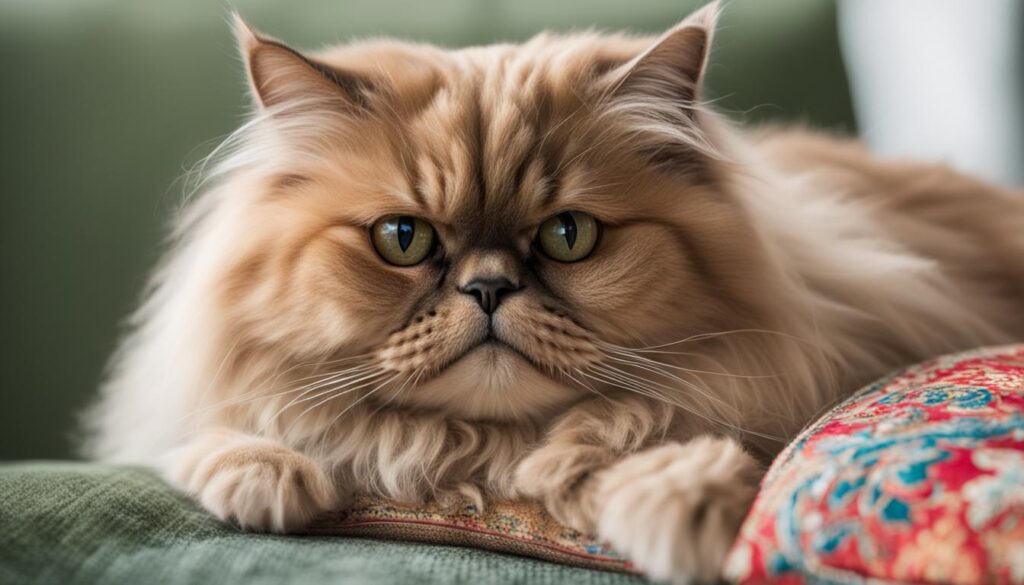
As with any pet, ensuring the health and wellness of your Persian Cat is essential. This regal breed is known for its long, luxurious coat, which requires regular grooming and attention to keep it in prime condition. However, grooming is just one aspect of Persian Cat care that can impact their overall well-being.
Common Persian Cat Health Issues
While Persian Cats are generally healthy cats, there are some health issues that they may be more prone to than other breeds. These include:
| Health Issue | Description |
|---|---|
| Polycystic Kidney Disease (PKD) | A genetic disorder that can cause kidney failure in cats. Testing is available to detect the gene in breeding cats. |
| Respiratory Issues | Persian Cats can be prone to respiratory issues due to their flat faces and small nostrils. |
| Dental Issues | The breed’s small jaw and crowded teeth can lead to dental problems. |
If you suspect that your Persian Cat may have any of these health issues, it’s important to consult with your veterinarian as soon as possible. Early detection and treatment can make a significant difference in your cat’s overall health and quality of life.
Preventing Health Issues in Persian Cats
While some health issues are genetic and cannot be prevented, there are steps you can take to reduce the risk of certain health problems in your Persian Cat. These include:
- Scheduling regular veterinary check-ups
- Maintaining a healthy and balanced diet
- Providing regular exercise and playtime
- Maintaining good dental hygiene with regular teeth cleaning
By taking a proactive approach to Persian Cat care, you can help your feline friend live a long and healthy life.
Persian Cat Adoption: Embracing a Furry Companion
Adopting a Persian Cat can be an incredibly fulfilling experience. Not only are you providing a loving home to a feline friend, but you are also giving a shelter cat a second chance at a happy life. Before embarking on the journey of adoption, it is essential to understand the process and factors to consider.
Finding a Persian Cat for Adoption
The first step in adopting a Persian Cat is finding a reputable shelter or rescue organization. You can browse online databases or visit local shelters in person to find a suitable furry friend. It is important to research and choose a reputable organization that is committed to the welfare of the cats in their care and can provide you with detailed information about potential adoption candidates.
Considerations for Adoption
Before adopting a Persian Cat, it is essential to consider the responsibilities and costs that come with pet ownership. While Persian Cats are generally low-maintenance, they still require regular grooming and veterinary care. It is also important to ensure you have the time, space, and resources necessary to provide a safe and comfortable home for your new furry companion.
The Joy of Giving a Forever Home
The joy of giving a Persian Cat a forever home is immeasurable. These regal and affectionate felines have a lot of love to give and can bring immense happiness and comfort to their human companions. Adopting a Persian Cat is not only rewarding for you but for the cat as well, who otherwise may not have had the chance to find a loving home.
Overall, adopting a Persian Cat is a wonderful way to bring a furry friend into your life and give a shelter cat a second chance. With proper research, preparation, and care, you can provide a loving and fulfilling home to a loyal and affectionate companion.
The Beautiful World of Persian Cat Colors and Patterns
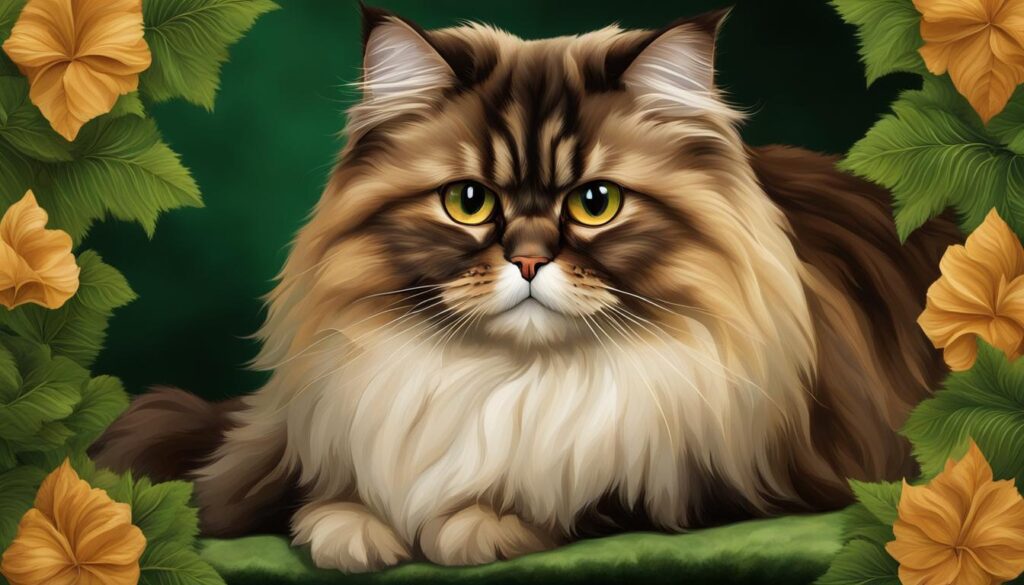
One of the most mesmerizing aspects of Persian Cats is their stunning variety of colors and patterns. From solid coats to striking combinations, each cat has its unique aesthetic charm.
Persian Cat Colors
Persian Cats come in a range of solid colors, including white, black, blue, cream, red, and silver. They can have a variety of shades within each color category, from the palest, almost white hue to the deepest, richest tones.
In addition to the solid colors, Persian Cats can also have a mix of colors, such as tabby patterns or tortoiseshell coloring. Tabby patterns are usually a combination of two colors, with stripes or spots on the coat. Tortoiseshell coloring refers to a combination of black, orange, and sometimes white, creating a marbled effect on the fur.
Finally, there are bicolor Persian Cats, which have a predominantly white coat with patches of another color. These patches can be any color, with the most common being black, blue, and red.
Persian Cat Patterns
Persian Cats can also have a variety of distinct patterns that add a unique dimension to their appearance. One of the most common patterns is the pointed pattern, which is similar to that of a Siamese cat. These cats have a light-colored coat with darker points on areas such as their face, ears, paws, and tail.
Another pattern is the shaded pattern, which is characterized by a gradual change in color from the cat’s back to their belly. This shading can be any color, with the most common being silver or gold.
The smoke pattern is another unique option, with a solid color at the base of the fur and a lighter color at the tips. This creates a smoky effect on the coat and can be seen in a variety of colors.
Whether you prefer a solid coat, a mix of colors, or a unique pattern, there is a Persian Cat to suit every taste. These majestic felines have captivated cat lovers for centuries with their unparalleled beauty and elegance.
Persian Cat Breeding and Genetics
Breeding Persian Cats requires in-depth knowledge of their genetics and heritage. As one of the oldest cat breeds, Persian Cats have a rich history that must be preserved through responsible breeding practices.
When selecting Persian Cats for breeding, it’s crucial to consider their health, temperaments, and physical traits. Breeders should also be aware of the potential genetic health issues that may arise in the offspring and take preventive measures to minimize risks.
One significant aspect of Persian Cat breeding is maintaining the breed’s distinct features, such as their luxurious coat and striking eye color. Persian Cats come in various colors and patterns, including solid, bicolor, and tabby coats. Breeders must also ensure that their cats have excellent bone structure, facial features, and overall conformation.
Responsible breeders keep detailed records and pedigrees to maintain the breed’s integrity and trace their cats’ lineage. Breeders should also follow ethical breeding practices, such as not breeding cats too frequently and providing adequate socialization and care for their animals.
For those interested in breeding Persian Cats, it’s essential to connect with reputable breeders and seek guidance from experienced professionals in the field. By practicing responsible breeding and preserving the breed’s characteristics, we can ensure that Persian Cats remain a beloved and regal breed for years to come.
Persian Cat Socialization and Interaction
As a dedicated Persian Cat owner, I believe that proper socialization is key to developing a healthy and well-behaved feline companion. While Persian Cats are known for their affectionate and gentle nature, they can develop behavioral issues if not properly socialized.
The socialization process should begin early on in your Persian Cat’s life, ideally during the kitten stage. Introduce your kitten to a variety of people, including children, and other pets, to help them develop positive associations with humans and other animals.
It’s important to supervise any interactions between your Persian Cat and other pets, especially dogs or larger animals. Always create a safe and comfortable environment for your feline friend, and never force them into a situation that makes them uncomfortable.
Playtime is an excellent way to bond with your Persian Cat and develop their social skills. Invest in a variety of toys, such as feather wands, toy balls, and scratching posts, to keep your feline friend entertained and engaged.
Providing your Persian Cat with plenty of affection and attention is also essential for fostering positive socialization and interaction. Make sure to praise and reward your feline companion for good behavior, and provide plenty of cuddles and head scratches to reinforce your bond.
Remember that every Persian Cat has their own unique personality and preferences, so be patient and flexible during the socialization process. With time, patience, and plenty of love, your Persian Cat will become a happy and well-adjusted member of your family.
Persian Cat as a Family Pet
If you’re looking for a feline companion that can adapt well to family life, the Persian Cat may be the perfect pet for you. As a gentle and affectionate breed, Persian Cats make loyal and loving companions for both children and adults.
One of the most attractive qualities of the Persian Cat is their calm and relaxed nature. They tend to be less active than some other cat breeds, making them well-suited for indoor living. They are content to lounge around and soak up attention from their human family members.
Additionally, Persian Cats have a reputation for being excellent with children. They are patient and even-tempered, making them less likely to be irritated by rough play. However, as with any pet, it’s important to teach children how to handle and interact with pets properly.
When it comes to other pets in the household, Persian Cats can generally get along well with other cats and even dogs. However, introductions should be done gradually and under supervision to ensure a smooth transition.
| Pros of Having a Persian Cat as a Family Pet | Cons of Having a Persian Cat as a Family Pet |
|---|---|
|
|
Table: Pros and Cons of Having a Persian Cat as a Family Pet
When considering adopting a Persian Cat, it’s important to ensure that you are able to provide the necessary care and attention to keep them healthy and happy. From regular grooming to proper nutrition and healthcare, they require a significant investment of time and resources.
Persian Cat in Pop Culture and Art
It’s no secret that Persian Cats have captivated people for centuries, and their regal beauty and unique personality have made them a popular subject in many forms of art and media. From movies and books to paintings and sculptures, Persian Cats have been depicted and revered in various ways, often symbolizing elegance, grace, and sophistication.
One of the most famous portrayals of Persian Cats in pop culture is the character of Mr. Bigglesworth in the Austin Powers movies. This hairless white Persian Cat is the beloved pet of Dr. Evil and plays a significant role in the films.
Another notable example of Persian Cats in pop culture is the classic children’s book “The Cat in the Hat” by Dr. Seuss, featuring the character of the mischievous feline with a red and white striped hat. While the Cat in the Hat’s breed is never specified, many people believe that he is based on a Persian Cat due to his distinct appearance.
Persian Cats have also been a popular subject in art, inspiring painters, sculptors, and other artists to create works that showcase their beauty and elegance. In the 19th century, French painter Rosa Bonheur created a stunning portrait of a Persian Cat, capturing its grace and poise in exquisite detail. Similarly, Japanese artist Hiroshige Ando created a woodblock print of a Persian Cat sitting on a cushion, surrounded by delicate flowers and intricate patterns.
“In ancient Persia, cats were considered sacred animals and valued for their companionship and loyalty. Today, Persian Cats continue to captivate people with their beauty and unique personality, inspiring art and media that celebrates their regal presence.”
Conclusion
The Persian Cat is a breed that truly epitomizes elegance and regal charm. Throughout this guide, we explored the unique traits, care needs, and captivating history of these majestic felines. Adopting a Persian is about more than just welcoming a furry companion – it’s embracing a cultural legacy of sophistication and beauty.
By providing them with proper grooming, nutrition, and an abundance of love, your Persian will thrive as a source of joy and companionship for years to come. Their gentle spirits and ability to steal our hearts have allowed Persians to achieve timeless appeal, celebrated in art, media, and homes worldwide.
Invite the regal presence of a Persian into your life, and you’ll be rewarded with unconditional loyalty from a feline friend that combines centuries of breed heritage with a personality as luxurious as their iconic coat. An investment in a Persian Cat pays dividends in the simple joys of the human-pet bond.
FAQs
What is a Persian Cat?
A Persian Cat is a long-haired breed of cat known for its distinctive facial features, including a flat nose, large round eyes, and a thick, luxurious coat.
Where did Persian Cats originate?
Persian Cats originated in ancient Persia (modern-day Iran) and were highly valued by Persian aristocracy as household pets.
How big do Persian Cats get?
Persian Cats are medium to large-sized cats, typically weighing between 7 and 12 pounds when fully grown.
What colors do Persian Cats come in?
Persian Cats can come in a wide variety of colors and patterns, including solid colors, bi-colors, calicos, and tabbies.
How long do Persian Cats live?
With proper care and a healthy lifestyle, Persian Cats can live between 12 and 15 years on average.
Are Persian Cats high-maintenance?
Yes, Persian Cats are considered high-maintenance due to their grooming needs. Their long coats require daily brushing and regular bathing to prevent matting and tangles.
Do Persian Cats shed a lot?
Persian Cats are known for shedding a moderate to high amount, especially during seasonal changes when they shed their undercoats.
Are Persian Cats good with children?
Persian Cats are generally good with children, thanks to their calm and gentle temperaments. However, it’s important to supervise interactions and teach children how to properly handle cats.
Can Persian Cats be left alone for long periods?
Persian Cats are affectionate and enjoy companionship, so they should not be left alone for extended periods. They can develop separation anxiety and destructive behaviors.
Do Persian Cats get along with other pets?
With proper introductions and socialization, Persian Cats can get along well with other pets, including cats and dog breeds known for their calm temperaments.
What is the ideal living environment for a Persian Cat?
Persian Cats do best in a calm, quiet environment with minimal noise and disruptions. They prefer to live indoors and have a consistent routine.
Are Persian Cats vocal?
Persian Cats are generally not very vocal compared to other breeds. They may make soft meowing sounds or purr to communicate their needs or contentment.
How often should Persian Cats be groomed?
Persian Cats require daily brushing to prevent matting and tangles in their long coats. They should also be bathed and groomed every 4 to 6 weeks.
What type of brush is best for grooming Persian Cats?
A stainless steel greyhound-style comb and a slicker brush are recommended for grooming Persian Cats and removing loose hair and tangles.
Can Persian Cats be clipped or shaved?
It’s generally not recommended to clip or shave a Persian Cat’s coat, as it can alter the coat’s texture and cause skin issues. Regular grooming is preferred.
What type of litter box is best for Persian Cats?
Persian Cats do best with a large, uncovered litter box with low sides to accommodate their long coats and make it easier for them to enter and exit.
Do Persian Cats have any common health issues?
Persian Cats are prone to certain health issues, including polycystic kidney disease, respiratory problems due to their flat faces, and dental issues due to their small jaws.
Can Persian Cats go outside?
While some Persian cats may enjoy supervised outdoor time, they are generally better suited as indoor cats due to their grooming needs and risk of respiratory issues.
What type of food is best for Persian Cats?
Persian Cats thrive on a high-quality, balanced diet formulated for their specific nutritional needs. Both wet and dry foods are acceptable, but avoid free-feeding.
How much exercise do Persian Cats need?
Persian Cats have relatively low energy levels and do not require extensive exercise. However, they should have access to scratching posts and toys to maintain activity levels.
Can Persian Cats be trained?
While not known for their trainability, Persian Cats can learn basic commands and tricks with patience and positive reinforcement training methods.
Are Persian Cats hypoallergenic?
No, Persian Cats are not hypoallergenic. Their long coats and shedding can trigger allergies in some people.
Do Persian Cats have any special grooming needs?
In addition to daily brushing and regular bathing, Persian Cats may require occasional trimming around their eyes, ears, and sanitary areas to maintain their appearance and hygiene.
How can I tell if my Persian Cat is overweight?
Signs of obesity in Persian Cats include a lack of a defined waistline, difficulty grooming themselves, and lethargy. Regular weigh-ins and body condition monitoring are recommended.
Can Persian Cats be picky eaters?
Some Persian Cats can be picky eaters, especially when it comes to wet food. It’s important to offer a variety of high-quality foods and encourage eating with treats or toppers.
Do Persian Cats have any unique behavioral traits?
Persian Cats are known for their calm, laid-back personalities and affectionate nature towards their owners. They are generally not as active or playful as some other breeds.
How do Persian Cats communicate?
Persian Cats primarily communicate through body language, such as tail movements, ear positions, and eye contact. They may also use soft meows or purrs to convey their needs or emotions.
Can Persian Cats be shown in cat competitions?
Yes, Persian Cats are eligible for cat shows and competitions, where they are judged based on their adherence to breed standards, such as coat quality, body type, and overall appearance.
Are Persian Cats good apartment pets?
Persian Cats can make good apartment pets, as long as their grooming and exercise needs are met. However, they may be better suited for larger living spaces due to their size and coat maintenance requirements.
How much do Persian Cats typically cost?
The cost of a Persian Cat can vary depending on factors such as breeder reputation, pedigree, and location. On average, expect to pay anywhere from $500 to $2,000 or more for a purebred Persian kitten.
References
The International Cat Association (TICA)
Please also check other articles on animals which may be of interest to you:
Bengal Cats – A Complete Guide to Understanding and Caring for These Magnificent Felines

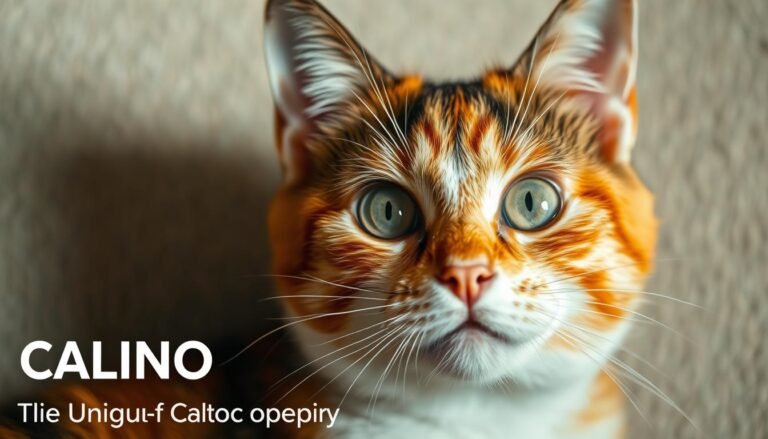
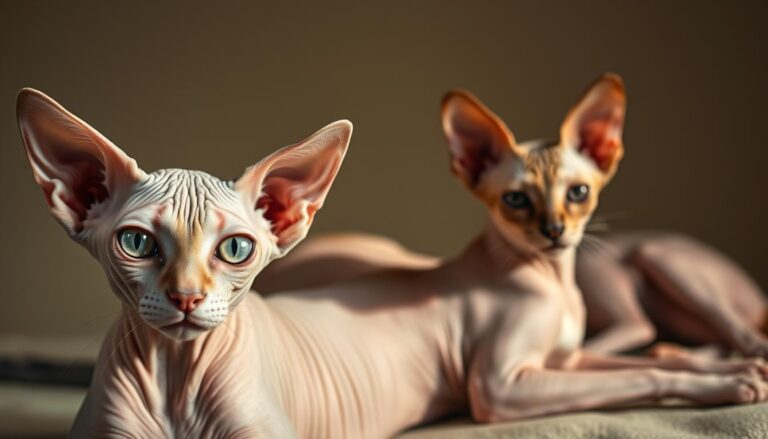
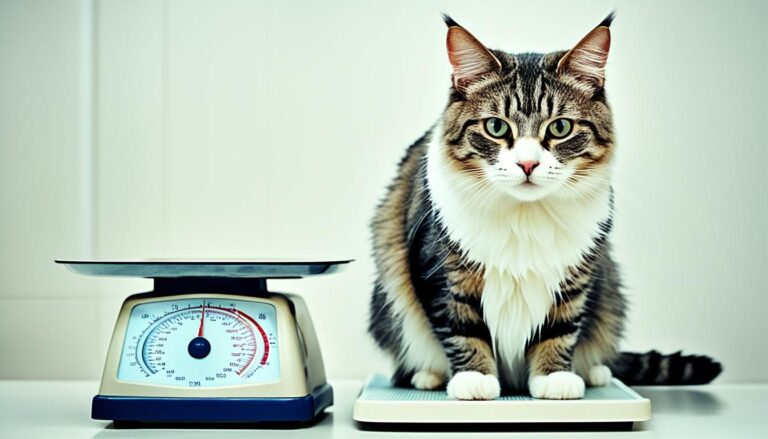




[…] Sphynx cat breed is known for its hairless appearance, making it stand out from other cat breeds. They are also […]
[…] frequency at which a cat can have litters is essential for cat breeders and owners interested in cat breeding. Factors such as cat fertility, the cat’s gestation cycle, and overall reproductive health […]
[…] bits of dried, dead skin that cats shed, is the biggest trigger for allergies. However, different cat breeds shed dander in varying levels and some naturally produce lower levels of allergenic proteins. While […]
[…] Different cat breeds have different activity levels. Some breeds are more active and require more exercise, while others are content to lounge around the house all day. Consider your lifestyle and how much time you have to devote to your cat’s exercise needs when choosing a breed. […]